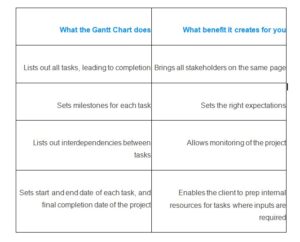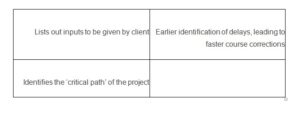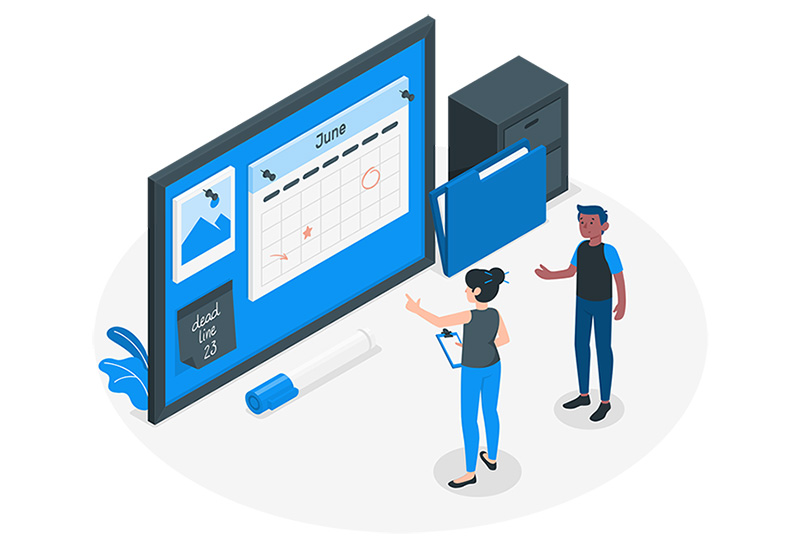Project management: the compass that steers your insight assignments
Sound project management can sometimes be the differentiator between a good project and a poorly-executed one. Here’s how to ace this game!
This is the next blog in our series on what you need to bear in mind when making the shift to independent insight consulting. Before we dive in, here’s a quick recap of what we’ve discussed so far and how this series will unfold:
- Managing your income and savings prudently (Read about it here)
- Developing expertise (Read about it here)
- Executing your insight projects efficiently (This post!)
- Thinking of your consulting practice through a micro-entrepreneurship lens (Coming soon!)
- Securing repeat customers (Coming soon!)
Let’s get into success factor #3: Project management
As an employee, poor project management in insights projects might simply lead to longer hours at your desk, not to mention stress. But as a consultant, it gets worse! If you spend more time on a project than budget, you lose time PLUS the money you could otherwise have earned doing more work! It also eats into your personal life. Now, your family is not just angry for not spending time with them; they’re also upset you cannot take them on that Goa holiday like you planned.
On the other hand, great execution of high value-added services can allow you the luxury of spare time that can be spent at leisure, giving back to society, or upgrading your skills. So, how could you manage projects efficiently?
#1: Clear understanding of the scope
“Before anything else, preparation is the key to success.”
Alexander Graham Bell
One of the most under-appreciated tasks for independent insight consultants is a precise estimation of the time and effort required for a project. Too often, one relies on historic norms like ‘6 to 8 weeks for this type of study’. Such estimates invite Parkinson’s dreaded law to come true: “Work expands (or contracts) to fill the time available for its completion.”
A clear understanding of the scope can also unearth latent gaps in client communication or intent that may emerge later when it is too late. For example, a client may say they wish to test a concept in the market. They assume you will also measure how the concept holds up against their competitor’s existing products, so they fail to communicate it to you. If this requirement emerges later, it would mean a change in the end output, the time, and the pathway to get there. That’s why spending time, in the beginning, to precisely estimate the scope can enable a smooth project.
That’s not all. It also empowers you to decide the minimum fee you should charge. Once the base is fixed, you may want to charge a premium due to other factors, like unique expertise, delivery on a crunched timeline, and so on. If the scope is fluid and contains a degree of uncertainty, you may create a broad scope with a price range or even time-based pricing.
#2: Split the project into smaller tasks with milestones
Sometimes a project may appear simple in totality but can contain hidden complexities that can affect your timeline later. For example, you may undertake a Customer Journey Mapping exercise. The scope involves building a visual blueprint of your customer’s complete brand journey and thinking of more empathetic experiences at each stage. You’ve done this before so you assume it won’t take much time. However, when you get into the details, you realize it is not as straightforward as you imagined because the customer’s brand journey involves many smaller, intricate stages between two touchpoints, and you also need to factor in their offline behavior. Splitting the project into smaller tasks enables you to estimate the time required to execute the project at the beginning itself.
It also acts as a guideline to establish your base fee. For insights projects, each task could take anywhere between 8 – 40 working hours (1 – 5 working days). Smaller tasks that take 1 or 2 hours could be combined into a larger group. Similarly, larger tasks can be broken down into manageable pieces. The splitting enables you to set milestones for each task, that can then be used to monitor the project on a daily, weekly, or fortnightly basis.
At InsightGig, we are currently working on developing a module that can help you document milestones along with time! This module would also be visible to your client. This makes mutual monitoring and course correction easy.
#3: Use proven Project Management techniques
The co-founders of InsightGig often used Gantt Charts in the past to execute their own insights projects. A typical Gantt Chart for an insights project would look like this:
We highly recommend sending a Gantt Chart to your client at the start of every project and updating it based on progress at regular intervals throughout the project. This may sound tedious. But it has significant benefits!


For example, you begin a project with a client on measuring employee satisfaction. To get to your end outcome, you need data sets coming in from the client on time every 3 days, for the next 14 days. While the client has assured you this will happen, their actual team members have delayed sending you the data. Moreover, when it comes to you, it’s not cleaned up. All this delays your timeline. At the end of one week, the client, assuming everything has gone as per plan, wonders why your output is not on track and the “us and them” game begins! Having strong project management ensures everyone knows the status of an item at the same time and it compels each person to do their bit to keep the project machinery afloat. It also allows the client and you to step in and course correct before the delay gets unmanageable.
We plan to make such Project Management tools available on the InsightGig platform to independent consultants in the future!
#4: Don’t recreate the wheel
As any experienced insights professional will tell you, the same task can be done at different times by different people. The faster ones are typically ahead on the learning curve, knowing exactly what to do to accomplish the task or drawing on past documented knowledge quickly to complete tasks faster. For instance, a B2B or industrial research professional focusing on the Indian market could keep readymade and updated documents on the size of the industrial sector in each state of India. Such data would easily allow the professional to recommend primary research in their proposal. Similarly, a data scientist could keep codes to run certain models in a semi-ready state, only changing the code based on fresh data. Or someone exploring hybrid work experience can benefit from secondary research on the key driving factors for employees and employers. This research negates the need to do primary research to uncover the factors and, instead, lets you direct time and effort in evaluating the client’s performance on these factors and what improvements may be made.
Such thoughtful knowledge avoids reinventing the wheel. It creates pre-packaged sets of data and insight that can be reused and re-purposed so that the time taken to do the task can be optimized. If you do all the above, great! However, you need not be tied to one method. You can also innovate and use modern techniques for Project Management.
#5: Experiment with Agile methods
At InsightGig, we are at the confluence of insights and technology. We are a big fan of Agile project management, commonly used in software projects but not practiced much while executing insights projects. This is a very large topic, and we will leave you with links that you can use to read up further. You can go over this article and this one. If you have ideas on how to use Agile methodology in your projects, do let us know!
Conclusion
As many seasoned insight consultants will tell you, apart from expertise, sound project management can sometimes be the differentiator between a good project and a poorly-executed one. Take time to assess the scope clearly, set expectations, break down the project into smaller tasks and milestones, use proven project management techniques, reuse data and knowledge, and experiment with new-age methodologies.
As a deep vertical-focused platform, InsightGig is constantly developing project management tools to help consultants execute projects smoothly. Look out for exciting features down the line!







